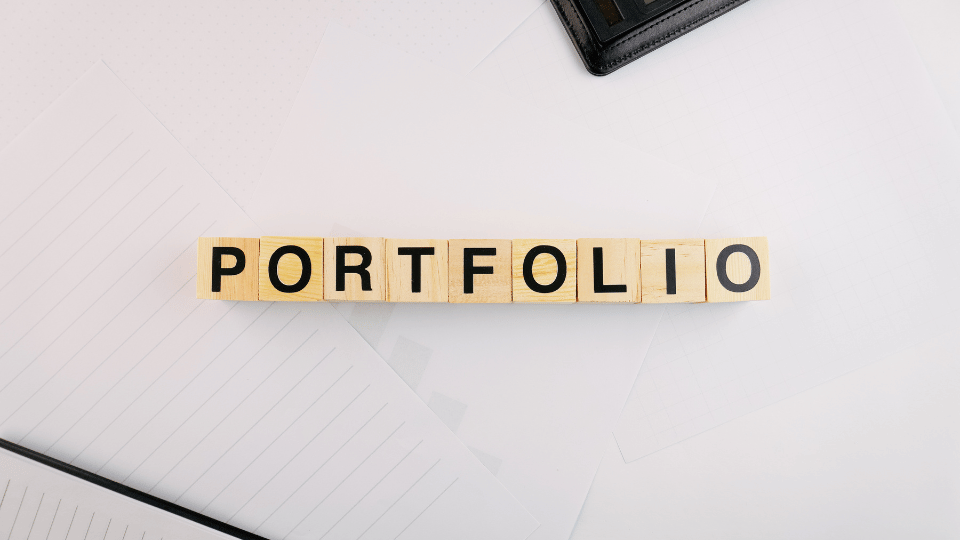How to Build a Canadian Stock Portfolio in 2025
Have you ever dreamed of building a robust stock portfolio that sets you up for financial freedom? Imagine seeing your investments grow, year after year, providing you with the security and comfort you deserve. Well, 2025 could be YOUR year to make that dream a reality! Did you know that, according to recent data, Canadian stocks, as represented by the S&P/TSX Composite Index, have delivered an average annual return of around 9.5% over the past 25 years? That’s right, and it’s no fluke, eh? The Canadian market offers unique opportunities that smart investors can capitalize on.
But let’s be real, navigating the stock market can feel like venturing into a jungle without a map, right? You wouldn’t hike the West Coast Trail without a compass and a solid plan, would you? Similarly, jumping into the stock market without the right knowledge is a recipe for disaster. And trust me, I’ve seen people make some costly mistakes because they didn’t do their homework. It’s enough to make you want to pull your hair out! Fear not!
In this guide, we’ll not only give you that map but also teach you how to use it. We’re going to unlock the secrets to building a winning Canadian stock portfolio, tailored specifically for the 2025 landscape. We’ll break down complex concepts into easy to understand language, and I’ll share some of my own hard earned tips and tricks. Think of me as your friendly investing mentor, guiding you every step of the way. By the end of this article, you’ll have a clear roadmap to start your investment journey with confidence. We’ll cover everything from essential investment strategies, like how to use a TFSA or an RRSP to your advantage, to common pitfalls to avoid. Plus, I’ll even throw in some expert predictions for the Canadian market in 2025 that you won’t want to miss. And, perhaps most importantly we’re going to talk about some major stock sectors to consider.
Understanding the Canadian Market Landscape in 2025
Alright, picture this: you’re planning a road trip across Canada. You wouldn’t just jump in the car and start driving without checking the weather forecast, road conditions, and maybe booking a few hotels along the way, would you? Nope, you’d do your research! Investing in the Canadian stock market is similar. You need to understand the “lay of the land” before you start throwing your hard earned money around.
- Economic Outlook: So, what’s the Canadian economy looking like for 2025? Well, economists are predicting moderate growth, with GDP expected to increase by around 1.8% to 2.2%. Not too shabby, but not exactly explosive growth either. Inflation is expected to hover around the Bank of Canada’s target of 2%, which is a good thing. It means your money won’t be losing its value too quickly. Interest rates are a bit of a wildcard, though. Some experts believe they might start to creep up a bit in 2025, while others think they’ll stay relatively low. This is something we’ll need to keep a close eye on, as interest rates can significantly impact the stock market. For example, higher interest rates can make borrowing more expensive for companies, which can hurt their profits and, consequently, their stock prices.
- Industry Trends: Now, let’s talk about where the action might be in 2025. Canada’s always been known for its natural resources, and that’s not changing anytime soon. But did you know that Canada is a world leader in renewable energy production? Yep, we’re talking about things like hydroelectric power, wind, and solar. With the world increasingly focusing on sustainability, Canadian renewable energy companies could be a goldmine for investors. I’d definitely keep an eye on companies like Brookfield Renewable Partners and Northland Power. The tech sector is another area to watch. Cities like Toronto, Vancouver, and Montreal are becoming major tech hubs. Shopify, a Canadian ecommerce giant, is a prime example of the innovation happening in our country. Keep in mind though, that tech stocks can be volatile, so you need to have a strong stomach for risk!
- Regulatory Changes: The government is always tinkering with rules and regulations, and 2025 will likely be no different. One thing to watch out for is any changes to the rules around TFSAs and RRSPs. These are powerful tools for Canadian investors, and any tweaks to contribution limits or tax benefits could impact your investment strategy. The federal government might introduce new regulations related to climate change, which could impact companies in the energy and resource sectors. For instance, there might be stricter emissions standards or new incentives for green technologies. Stay informed about these changes by following reputable financial news sources.
- Global Influences: We don’t live in a bubble, folks. What happens in other parts of the world can have a big impact on the Canadian stock market. For instance, changes in US trade policy or economic turmoil in Europe can send ripples through our economy. Geopolitical tensions, like the ongoing situation in Ukraine, can also create uncertainty in global markets. Remember the supply chain chaos caused by the pandemic? That’s a perfect example of how global events can affect us here at home. Keep an eye on global economic indicators, such as US inflation rates, European Central Bank policies, and economic growth in China.
You might be thinking, “Wow, that’s a lot to keep track of”! And you’re right, it is. But don’t worry, you don’t need to become an economist overnight. The key is to stay informed, do your research, and focus on the factors that are most relevant to your investment goals. Just like a seasoned captain keeps a close watch on the weather and adjusts the sails accordingly, we need to stay adaptable and adjust our investment strategy based on the ever changing market conditions. In the next section we will discuss setting investment goals and risk tolerance.
Setting Your Investment Goals and Risk Tolerance
Alright, let’s be honest, we all want to make money, right? But just saying “I want to be rich” isn’t a goal. It’s a wish. To turn that wish into a reality, we need to get specific. It’s time for some soul searching. This is about figuring out what YOU want to achieve with your investments.
- Defining Objectives: Why are you investing? What are you hoping to achieve? This is where we get down to brass tacks. Are you saving for a down payment on a house? Maybe you’re dreaming of that cozy cottage by the lake. Or perhaps you’re planning for a comfortable retirement, filled with travel and adventures. Maybe you want to set up a fund for your kids’ education, so they don’t have to start their adult lives saddled with debt. Whatever it is, you need to define it. Write it down. Make it real. I like to use the SMART goal framework. You want your goals to be Specific, Measurable, Achievable, Relevant, and Time bound. So, instead of saying, “I want to save for retirement”, you might say, “I want to have $1 million saved in my RRSP by the age of 65”. See the difference? That’s a SMART goal!
- Risk Assessment: Okay, here comes the gut check. How much risk are you willing to take on? This is crucial, and it’s something a lot of people get wrong. They chase those high returns without considering the potential downsides. Investing is not gambling. It’s about making calculated decisions based on your risk tolerance. Think of it like this: are you the type of person who loves roller coasters, or do you prefer the gentle sway of a carousel? Some people can handle the ups and downs of the stock market. They’re okay with seeing their portfolio value fluctuate, knowing that it’s a long term game. Others get queasy at the slightest dip. They’d rather have slow and steady growth, even if it means potentially lower returns. There’s no right or wrong answer here. It’s all about what you’re comfortable with. Be honest with yourself because if you take on too much risk, you might panic and sell at the worst possible time, locking in losses.
- Time Horizon: How long do you plan to invest? This is another biggie. Are you investing for the short term, say, less than five years? Or are you in it for the long haul, like 10, 20, or even 30 years? Your time horizon will significantly impact your investment choices. If you’re saving for a down payment that you’ll need in two years, you’ll want to stick with relatively safe investments, like a high interest savings account or a GIC. You don’t want to risk losing your principal in the stock market when you need the money soon. But if you’re saving for retirement and you’re still in your 30s or 40s, you can afford to take on more risk. You have time to ride out the market’s ups and downs. Historically, the stock market has always recovered from downturns and delivered positive returns over the long term.
- Investment Style: Are you a hands on investor or do you prefer a more passive approach? Do you enjoy researching individual stocks, poring over financial statements, and staying glued to market news? Or does that sound like a total snoozefest? If you’re the former, you might enjoy actively managing your portfolio, picking your own stocks and making your own trades. But if you’re the latter, you might be better off with a passive approach, such as investing in index funds or ETFs. These funds simply track a particular market index, like the S&P/TSX Composite Index. They require less work on your part and typically have lower fees than actively managed funds. There are also different investment styles to consider. Value investors, for instance, look for undervalued companies that they believe are trading below their intrinsic worth. Growth investors, on the other hand, seek out companies with high growth potential, even if they’re currently trading at a premium. Dividend investors focus on companies that pay out regular dividends, providing a steady stream of income.
Figuring out your investment goals and risk tolerance is like creating your own personal investing roadmap. It’s about understanding where you want to go and how you want to get there. Once you have these things figured out, choosing the right investments becomes a whole lot easier. Don’t rush this process. Take your time, be honest with yourself, and don’t be afraid to adjust your plan as your circumstances change. In the next section we will discuss choosing the right investment accounts.
Choosing the Right Investment Accounts for Canadians
Okay, so you’ve got your investment goals and risk tolerance sorted. Now, where are you going to put your money? You can’t just stuff it under your mattress, can you? (Please don’t do that!). Luckily, the Canadian government offers us some fantastic tax advantaged accounts to help our investments grow. Think of these accounts as special containers for your investments, each with its own set of rules and benefits.
- TFSA (Tax Free Savings Account) Explained: Let’s start with the TFSA. Seriously, if you’re Canadian and you’re not taking advantage of a TFSA, you’re missing out! The name says it all – it’s tax free! Any investment income you earn inside a TFSA, whether it’s interest, dividends, or capital gains, is completely tax free. How amazing is that? You can contribute a certain amount each year (the limit for 2025 is $7,000), and that contribution room carries forward if you don’t use it all. Plus, you can withdraw your money at any time without penalty. The flexibility of the TFSA makes it a great choice for both short term and long term goals. Let’s say you’re saving for a down payment on a house and you plan to buy in five years. You could invest your savings in a TFSA and potentially earn tax free returns, helping you reach your goal faster. Or, you could use your TFSA to save for retirement, taking advantage of the tax free growth over the long term. The TFSA is like the Swiss Army knife of investment accounts.
- RRSP (Registered Retirement Savings Plan) Breakdown: Now, let’s talk about the RRSP. This one’s a bit different. The RRSP is specifically designed for retirement savings. The big advantage of an RRSP is that your contributions are tax deductible. That means you can reduce your taxable income in the year you make the contribution, which can save you a bundle on your taxes. For example, if you’re in a 30% tax bracket and you contribute $10,000 to your RRSP, you could potentially reduce your tax bill by $3,000. That’s like getting a 30% return on your investment right off the bat! However, there’s a catch (isn’t there always?). You will have to pay taxes on the money when you withdraw it in retirement. But the idea is that you’ll likely be in a lower tax bracket in retirement than you are now, so you’ll still come out ahead. Also keep in mind that there are penalties for early withdrawals from an RRSP, unless you’re using the funds for the Home Buyers’ Plan or the Lifelong Learning Plan.
- Non Registered Accounts: So, what if you’ve maxed out your TFSA and RRSP contribution room? Well, then you might consider a non registered account. These accounts don’t offer the same tax advantages as TFSAs and RRSPs, but they don’t have any contribution limits either. Any investment income you earn in a non registered account is taxable in the year you earn it. This includes interest, dividends, and capital gains. You’ll need to keep track of your investment income and report it on your tax return. While non registered accounts don’t have the same tax perks, they can still be useful for long term investing, especially if you’re in a lower tax bracket or if you’ve already taken full advantage of your registered accounts.
- Choosing a Brokerage: Okay, you’ve got your accounts figured out. Now you need a place to actually buy and sell those investments. That’s where a brokerage comes in. Think of a brokerage as a gateway to the stock market. There are tons of options out there, from the big banks like TD Direct Investing, RBC Direct Investing, and BMO InvestorLine to discount brokerages like Questrade and Wealthsimple Trade. Each brokerage has its own set of fees, platforms, research tools, and customer support. You’ll want to compare them carefully to find the one that best suits your needs. If you’re a beginner, you might want a brokerage with a user friendly platform and lots of educational resources. If you’re a more experienced investor, you might prefer a brokerage with advanced trading tools and lower fees. Personally, I like Questrade for its low fees and decent platform, but Wealthsimple Trade is also a good option, especially for beginners.
Choosing the right investment accounts and brokerage is a crucial step in building your Canadian stock portfolio. It’s like laying the foundation for your financial future. So take your time, do your research, and don’t be afraid to ask for help if you need it. In the next section we will discuss diversification.
Diversification – Building a Balanced Canadian Stock Portfolio
Okay, imagine you’re at a buffet (because who doesn’t love a good buffet?). You wouldn’t just pile your plate high with only mashed potatoes, would you? No way! You’d want a little bit of everything, some salad, some protein, maybe some pasta, and of course, dessert! Diversification is the same idea. It’s about spreading your investments across different asset classes, sectors, and even geographies to reduce risk.
- The Importance of Diversification: Why is diversification so important? Well, it all comes down to managing risk. Different investments perform differently under different market conditions. When one investment is down, another might be up, helping to offset your losses. If you only invest in one stock or one sector, and that stock or sector takes a nosedive, you could lose a significant portion of your portfolio. But if you’re diversified, the impact of any one investment’s poor performance will be much smaller. Think of it like this: if you’re building a hockey team, you wouldn’t want all your players to be goalies, would you? You’d need a mix of forwards, defensemen, and goalies, each with their own strengths and weaknesses. A diversified portfolio is like a well rounded hockey team, capable of weathering any storm.
- Asset Allocation Strategies: So, how do you actually diversify your portfolio? It starts with asset allocation. This is just a fancy term for deciding how much of your portfolio to invest in different asset classes, such as stocks, bonds, and cash. Stocks are generally considered riskier but have the potential for higher returns. Bonds are typically less volatile than stocks but offer lower potential returns. Cash is the safest asset class but provides the lowest returns. The right asset allocation for you will depend on your risk tolerance, time horizon, and investment goals. A common rule of thumb is to subtract your age from 110 to determine the percentage of your portfolio that should be allocated to stocks. So, if you’re 40 years old, you might allocate 70% to stocks and 30% to bonds and cash. But remember, this is just a guideline, and you should adjust it based on your individual circumstances.
- Sector Diversification in Canada: Within the stock portion of your portfolio, you’ll want to diversify across different sectors of the Canadian economy. As we discussed earlier, the Canadian market is heavily weighted towards financials, energy, and materials. But there are other sectors to consider, such as industrials, consumer staples, consumer discretionary, technology, and utilities. Each sector has its own unique characteristics and risk/return profile. For example, financials tend to be sensitive to interest rate changes, while energy stocks are influenced by oil and gas prices. By diversifying across sectors, you can reduce your exposure to any one sector’s specific risks. For instance, in 2025, you might consider allocating a portion of your portfolio to renewable energy stocks, given the global shift towards sustainability. You might also allocate a portion to technology stocks, given the growth potential of Canadian tech companies.
- Geographic Diversification: Should you only invest in Canadian companies? Not necessarily. While there are many great investment opportunities in Canada, it’s also a good idea to consider international exposure. The Canadian stock market only represents a small portion of the global stock market. By investing in companies outside of Canada, such as in the US, Europe, or Asia, you can further diversify your portfolio and potentially tap into higher growth opportunities. You can gain international exposure through ETFs or mutual funds that invest in global markets. For example, you could invest in an ETF that tracks the S&P 500 index, giving you exposure to 500 of the largest US companies. Just be aware of the risks involved, such as currency fluctuations and geopolitical events.
Diversification is not about maximizing returns. It’s about managing risk. It’s about building a portfolio that can withstand market volatility and help you achieve your long term financial goals. It’s a fundamental principle of investing that every Canadian investor should understand and embrace. It might not be the most exciting topic, but trust me, it’s one of the most important. In the next section we will discuss top stock picks and investment strategies for 2025.
Top Stock Picks and Investment Strategies for 2025
Okay, so we’ve talked about the importance of understanding the market, setting your goals, choosing the right accounts, and diversifying your portfolio. Now, let’s get into some specific investment ideas that could potentially do well in the Canadian market in 2025. Remember, the stock market is unpredictable, and past performance is no guarantee of future results. But by analyzing trends and considering expert opinions, we can make some educated guesses about where the opportunities might lie.
- Blue-Chip Stocks: Let’s start with the steady Eddies of the Canadian stock market – blue-chip stocks. These are large, well-established companies with a history of stable earnings and, often, consistent dividend payments. Think of companies like Royal Bank of Canada (RBC), Toronto-Dominion Bank (TD), Canadian National Railway (CN), and Enbridge. These companies are leaders in their respective industries and have proven their ability to weather economic storms. They might not be the most exciting stocks out there, but they can provide a solid foundation for your portfolio. For example, RBC and TD are two of the largest banks in Canada, with strong balance sheets and a track record of delivering consistent returns to shareholders. They also pay out a decent dividend, which can provide you with a steady stream of income.
- Growth Stocks: Now, let’s talk about growth stocks. These are companies that are expected to grow at a faster rate than the overall market. They’re often in emerging industries or have innovative products or services. As we discussed earlier, the technology sector is a hotbed for growth stocks. Shopify, for example, has been a phenomenal growth story, revolutionizing the e-commerce industry. But there are other Canadian tech companies to watch, such as Constellation Software, which has a strong track record of acquiring and growing software businesses. Keep in mind that growth stocks can be more volatile than blue-chip stocks. They often reinvest their earnings back into the business rather than paying out dividends. So, you’re betting on their future growth potential.
- Dividend Investing in Canada: If you’re looking for a steady stream of income, dividend investing might be the way to go. Many Canadian companies, particularly in sectors like utilities, telecom, and financials, pay out regular dividends to their shareholders. This can be a great way to supplement your income or reinvest those dividends to grow your portfolio even faster. Some of the best Canadian dividend stocks include Fortis, a major utility company, BCE, a leading telecom provider, and the big Canadian banks. When choosing dividend stocks, look for companies with a history of consistent dividend payments and a sustainable payout ratio. This is the percentage of earnings that a company pays out as dividends. A payout ratio that’s too high could indicate that the dividend is unsustainable in the long run.
- ETFs and Mutual Funds: If you prefer a more hands-off approach, ETFs (Exchange-Traded Funds) and mutual funds can be a great way to gain diversified exposure to the Canadian stock market. ETFs are baskets of stocks that trade like individual stocks on an exchange. Mutual funds are professionally managed portfolios of stocks, bonds, or other assets. For example, the iShares S&P/TSX 60 Index ETF (XIU) tracks the performance of 60 large Canadian companies. It’s a low-cost way to invest in the broader Canadian market. There are also ETFs that focus on specific sectors, such as the BMO Equal Weight Banks Index ETF (ZEB), which invests in the big Canadian banks. Mutual funds, on the other hand, are actively managed by professional fund managers who make investment decisions on behalf of the fund’s investors.
- ESG Investing: Last but not least, let’s touch on ESG investing. This is a growing trend where investors consider environmental, social, and governance factors when making investment decisions. More and more investors are looking to align their investments with their values, and companies with strong ESG practices are often seen as better positioned for long-term success. For example, you might invest in a company that’s committed to reducing its carbon footprint, promoting diversity and inclusion, and operating with strong corporate governance. There are now many ETFs and mutual funds that focus on ESG investing, making it easier than ever to incorporate these factors into your portfolio. For instance, the iShares Jantzi Social Index ETF (XEN) tracks the performance of Canadian companies that meet certain ESG criteria.
These are just a few ideas to get you started. The key is to do your own research, understand the risks involved, and choose investments that align with your goals and risk tolerance. Remember, investing is a long-term game. There will be ups and downs along the way. But by staying informed, diversifying your portfolio, and sticking to your plan, you can increase your chances of success. In the next section, we will discuss monitoring and rebalancing your portfolio.
Monitoring and Rebalancing Your Portfolio
Think of your portfolio like a ship sailing across the ocean. You wouldn’t just set the course and then go to sleep, would you? No way! You’d constantly monitor the weather, the currents, and the ship’s position, making adjustments as needed. Monitoring and rebalancing your portfolio is the same idea. It’s about staying on top of your investments and making sure they’re still aligned with your goals.
- Tracking Performance: So, how often should you check your investments? Well, it depends on your investment style and how involved you want to be. But generally speaking, you should check your portfolio’s performance at least once a quarter. Most online brokerages provide tools that allow you to easily track your returns, see how your investments are performing, and compare your portfolio to relevant benchmarks. Don’t get obsessed with checking your portfolio every day. The stock market fluctuates, and seeing daily ups and downs can be stressful and lead to poor decision-making. Remember, you’re in this for the long haul. Focus on the big picture and don’t get caught up in the day-to-day noise.
- When to Rebalance: Over time, your portfolio will inevitably drift from its target asset allocation. This is because different investments perform differently. For example, if stocks outperform bonds, your stock allocation will become larger than you originally intended. Rebalancing is the process of buying and selling investments to bring your portfolio back to its target allocation. It’s like pruning a tree to keep it growing in the right direction. There are different approaches to rebalancing. Some investors rebalance on a set schedule, such as once a year or once a quarter. Others rebalance when their asset allocation deviates from their target by a certain percentage, such as 5% or 10%. For example, if your target allocation is 70% stocks and 30% bonds, and your stock allocation grows to 78%, you might sell some stocks and buy more bonds to bring it back to 70/30.
- Tax Considerations: Now, here’s where things can get a bit tricky. When you sell investments in a non-registered account, you may have to pay capital gains tax on any profits you’ve made. This is why it’s important to consider the tax implications of rebalancing before you make any trades. If you’re not sure how to handle the tax side of things, it’s always a good idea to consult with a tax professional. They can help you make sure you’re not paying more taxes than you need to. They might suggest strategies like tax-loss harvesting, which involves selling investments that have lost money to offset capital gains. It’s a bit complicated, but it can save you money in the long run.
- Staying Informed: The investment world is constantly changing. New companies emerge, industries evolve, and economic conditions shift. To be a successful investor, you need to stay informed about what’s happening in the market and the broader economy. This doesn’t mean you need to become a financial expert overnight. But you should make an effort to read reputable financial news sources, such as The Globe and Mail, Financial Post, or the Wall Street Journal. You can also follow financial blogs, listen to podcasts, or watch videos from trusted sources. Many brokerages also offer educational resources and market analysis to help you stay informed. The more you learn, the better equipped you’ll be to make sound investment decisions.
Monitoring and rebalancing your portfolio is an ongoing process. It’s not something you do once and then forget about. By staying engaged and making adjustments as needed, you can help ensure that your portfolio stays on track to meet your long-term financial goals.
Conclusion
Congratulations! You’ve made it through the ultimate guide to building a Canadian stock portfolio in 2025! We’ve covered a lot of ground, from understanding the market landscape to setting your goals, choosing the right accounts, diversifying your portfolio, picking some top stocks, and finally, monitoring and rebalancing. Building a successful Canadian stock portfolio in 2025 is absolutely within your reach! By understanding the market, setting clear goals, choosing the right investment accounts, and diversifying wisely, you’re well on your way. Remember, investing is a marathon, not a sprint. Stay disciplined, be patient, and don’t be afraid to seek professional advice if needed. The strategies and insights we’ve shared in this guide will provide a solid foundation for your investment journey. Now, it’s time to take action! Open that brokerage account, start researching those stocks, and begin building the financial future you’ve always dreamed of. Are you ready to make 2025 your year of investing success? Let’s do this!







